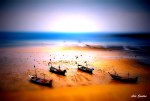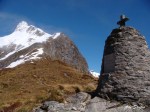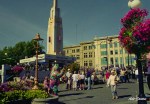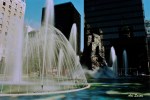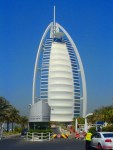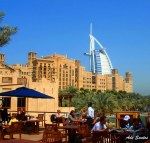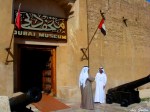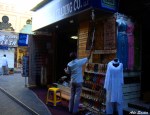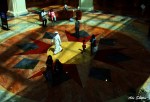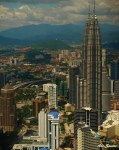Tilt-Shift Photography
Refers to the use of camera movements on small- and medium-format cameras, and sometimes specifically refers to the use of tilt for selective focus, often for simulating a miniature scene. Sometimes the term is used when the shallow depth of field is simulated with digital postprocessing; the name may derive from the tilt-shift lens normally required when the effect is produced optically.
“Tilt-shift” actually encompasses two different types of movements: rotation of the lens plane relative to the image plane, called tilt, and movement of the lens parallel to the image plane, called shift. Tilt is used to control the orientation of the plane of focus (PoF), and hence the part of an image that appears sharp; it makes use of the Scheimpflug principle. Shift is used to change the line of sight while avoiding the convergence of parallel lines, as when photographing tall buildings.
History and use
Movements have been available on view cameras since the early days of photography. Nikon introduced a lens providing shift movements for their 35 mm SLR cameras in the mid 1960s, and Canon introduced a lens that provided both tilt and shift movements in 1973; many other manufacturers soon followed suit. Canon and Nikon each currently offer several lenses that provide both movements. Such lenses are frequently used in architectural photography to control perspective, and in landscape photography to get an entire scene sharp.
Some photographers have popularized the use of tilt for selective focus in applications such as portrait photography. The selective focus that can be achieved by tilting the plane of focus is often compelling because the effect is different from that to which many viewers have become accustomed. Walter Iooss Jr. of Sports Illustrated, Vincent Laforet, Ben Thomas, and many other photographers have images using this technique on their web sites.
Camera movements
Tilt
On a regular camera, the image plane (containing the film or image sensor), lens plane, and object plane are parallel, and objects in sharp focus are all at the same distance from the camera. When the lens plane is tilted relative to the image plane, the plane of focus (PoF) is at an angle to the image plane, and objects at different distances from the camera can all be sharply focused if they lie on a straight line. With the lens tilted, the image plane, lens plane, and PoF intersect at a common line; this behavior has become known as the Scheimpflug principle.
When the PoF coincides with an essentially flat subject, the entire subject is sharp; in applications such as landscape photography, getting everything sharp is often the objective.
The PoF can also be oriented so that only a small part of it passes through the subject, producing a very shallow region of sharpness, and the effect is quite different from that obtained simply by using a large aperture with a regular camera.
Using tilt or swing changes the shape of the depth of field (DoF). When the lens and image planes are parallel, the DoF extends between parallel planes on either side of the PoF. With tilt or swing, the DoF becomes wedge shaped, with the apex of the wedge near the camera, as shown in the Scheimpflug principle article. The DoF is zero at the apex, remains shallow at the edge of the lens’s field of view, and increases with distance from the camera.
View camera users usually distinguish between rotating the lens about a horizontal axis (tilt), and rotation about a vertical axis (swing); small- and medium-format camera users often refer to either rotation as “tilt”.
Shift
In a subject plane parallel to the image plane, parallel lines in the subject remain parallel in the image. If the image plane is not parallel to the subject, as when pointing a camera up to photograph a tall building, parallel lines converge, and the result sometimes appears unnatural, such as a building that appears to be leaning backwards. Shift is a movement of the lens parallel to the image plane that allows the line of sight to be changed while keeping the image plane (and thus focus) parallel to the subject; it can be used to photograph a tall building while keeping the sides of the building parallel. The lens can also be shifted in the opposite direction and the camera tilted up to accentuate the convergence for artistic effect.
Shifting a lens allows different portions of the image circle to be cast onto the image plane, similar to cropping an area along the edge of an image.
Again, view camera users usually distinguish between vertical movements (rise and fall) and lateral movements (shift or cross), while small- and medium-format users often refer to both types of movements as “shift”.
Lens image circle
Whereas the image circle of a standard lens usually just covers the image frame, a lens that provides tilt or shift must allow for displacement of the lens axis from the center of the image frame, and consequently requires a larger image circle than a standard lens of the same focal length.
Applying camera movements
On a view camera, the tilt and shift movements are inherent in the camera, and many view cameras allow a considerable range of adjustment of both the lens and the camera back. Applying movements on a small- or medium-format camera usually requires a tilt-shift lens or perspective control lens. The former allows tilt, shift, or both; the latter allows only shift. With a tilt-shift lens, adjustments are available only for the lens, and the range is usually more limited.
Tilt-shift and perspective-control lenses are available for many SLR cameras, but most are far more expensive than comparable lenses without movements. The Lensbaby SLR lens is a low-cost alternative for providing tilt and swing for many SLR cameras, although the effect is somewhat different from that of the lenses just described. Because of the simple optical design, there is significant curvature of field, and sharp focus is limited to a region near the lens axis. Consequently, the Lensbaby’s primary application is selective focus and “toy camera”–style photography.
It is also possible to construct a tilt-shift lens of sorts, as described in the linked article by Dennison Bertram.
Selective focus
Selective focus can be used to direct the viewer’s attention to a small part of the image while de-emphasizing other parts.
With tilt, the depth of field is wedge shaped. Using a large amount of tilt and a small f-number gives a small angle at the apex of the wedge, and a narrow DoF. If the plane of focus is at a large angle to the image plane, the DoF may be more easy to envision as a “height of field” (with tilt) or a “width of field” (with swing).
The effect is different from that which obtains from using a large f-number without tilt. In a normal photograph, the PoF and the DoF are perpendicular to the line of sight; with tilt, the PoF can be almost parallel to the line of sight, and the DoF can be very narrow but extend to infinity. Thus parts of a scene at greatly different distances from the camera can be rendered sharp, and selective focus can be given to different parts of a scene at the same distance from the camera.
Miniature faking
Selective focus via tilt is often used to simulate a miniature scene, though as noted above, the effect is somewhat different from the shallow DoF in close-up photography of miniature subjects. Many such images are described as employing “tilt-shift”, but the term is somewhat of a misnomer because shift is seldom involved and is usually unrelated to the effect produced. The term may derive from the tilt-shift lens normally required when the effect is produced optically.
Basic digital postprocessing techniques can give results similar to those achieved with tilt, and afford greater flexibility, such as choosing the region that is sharp and the amount of blur for the unsharp regions. Moreover, these choices can be made after the photograph is taken. More accurate simulation of a miniature scene can be achieved with more advanced digital techniques. One advanced technique, Smallgantics, is used for motion-pictures; it was first seen in the 2006 Thom Yorke music video Harrowdown Hill, directed by Chel White.







